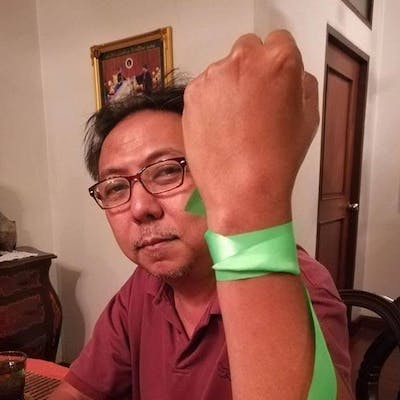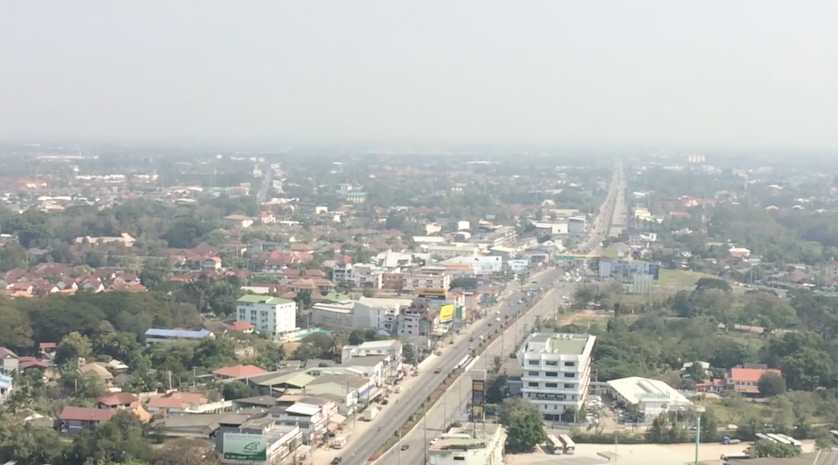I recently published an editorial as well as a report on a recent Breathe Council meeting, admiring the group’s dedication, but also voicing concerns over its lack of structure, strategy, transparency and communication. Since the publication of these stories Citylife has been contacted by many other players in the anti-pollution sphere, who joined us in voicing concerns and complaints over what they see as an exclusionary council of tight lipped and tight knitted advocates who don’t encourage, nor have the means to accept, public participation or allow dissenting voices and opinions to be heard.
I am happy to have been proven (somewhat) wrong.

I spent some of this afternoon with one of the members of Breathe Council’s communications team, Bunnaroth Buaklee, who has updated me on some very positive measures being taken in recent months as well as the council’s strategy laid out for this coming year, which includes the strengthening of the council’s structure and more communication and transparency with the public.
Talking a mile-a-minute and jumping between discussing overarching social, economic, political and cultural issues and the minutiae of each and every challenge and obstacle that must be overcome, I must admit that I was pretty overwhelmed, and can only imagine the council’s various impediments to progress. I am not making any excuses for the group, nor was Bunnaroth, but it is important that we all fully appreciate the sheer scale of this endeavour.
“The Breathe Council has been set up for one year,” said Bunnaroth over lunch yesterday. “I will be the first to admit that we have struggled to find a direction and focus. With volunteers from so many walks of life and backgrounds, we ended up using much of the budget on projects advocated by each member without any integration with the overall strategy – which we had yet to formalise. These were all good projects, but you were quite right when you said that there was no direction nor strategy. The Breathe Council is comprised of many working groups and we found some to work fast and efficiently while others lagged behind for various reasons. For instance, one group led by the successful leader of the Mae Chaem Model has a great track record in efficiency and this group is really pushing forward on many fronts because they have already laid the groundwork. But then, perhaps, a group of business people who may not have the skill to liaise with government officials just get nowhere. This meant that we were all working in different directions and at different paces and were not as effective as we should have been. With professionals, business people, NGOs, activists, academics and researchers all working together it is very hard to get everyone on the same page. That is why on the 9th February we will have a meeting to determine and restructure our internal system. We will focus on our overall strategy, on working efficiently and importantly on better communication with the public. 2021 will not be the same as 2020.”
Bunnaroth says that the council has narrowed down areas to focus on: reduction of forest fires, government policies and enforcement of industrial or city emissions, management of agricultural burning, pressure and communication with the central government with hopes they take action and communication with the public.
“You wrote last week that you think it is easier to totally ban all fire,” said Bunnaroth of my observation that perhaps a total ban would be a better solution than haphazard enforcement. “OK, let’s say all fire is banned. What about crematoriums, barbeques and grills found in every rural household, fire for warmth in winter, controlled forest fires to burn off excess leaves on the forest floor, and all the government burning? We think that a total ban is just not realistic and won’t be enforced evenly. So, how about we set a target of reducing this by 50%? How to achieve that? We have a plan.”
“Chiang Mai has 12 million rai of land, or thereabouts,” he continued. “Around 70%, or nine million rai, is forest land while three million is agricultural lowland and urban areas. Out of the nine million rai of forest land, four million rai are under the Department of National Park Wildlife and Plant Conservation which have staff, fire fighters and rangers with good fire prevention measures in place already. Now the five million rai which belongs to the Royal Forest Department, comprising reserved forests, these are not cared for. According to the 1997 constitution, the power of management of this five million rai of land was handed out to various local administrative bodies. Over the past five or six years which we have monitored this situation, we have seen the government pass responsibilities to local administrative groups, while the local groups ask, ‘Where is the money?’. There is simply no budget allocated to manage these forests as it has to be managed by each individual local body which has the tough task of shaving a budget from what is already a much-fought after annual budget much-needed for other areas from education to health, infrastructure to administration.”
“The current structure of governance is rigid,” continued Bunnaroth. “It is hard to move or bend, so we can’t force our agendas through, it simply won’t work. The past five to six months we have been working very closely with many sub-districts as well as with various government offices, often zigging and zagging to find ways to allocate budgets for self-governance. Chiang Mai is now leading the way, we have created a model which we hope other provinces and eventually countries, can follow.”

Bunnaroth went on to insist that the zero burning policy simply won’t work. First of all, there is no evenhanded enforcement, he explained, but also those who burn will be so afraid of being arrested they will simply burn entire mountains where as if burning was controlled then fire breakers could be set up, personnel can be allocated to oversee the fire and times can be allocated for each area to burn.
“The best time to burn is between 10am and 4pm, this is when the air lifts the pollution away,” explained Bunnaroth. “We now check hotspots at night and if there are any, then that means that the burning is not managed and the fire has got out of control. There should ideally be no hot spots after 4pm. We are also working with many highlanders on planning burning schedules. Some fields must be burnt at certain times, whether in preparation for planting or simply waiting for stubs to dry. But others, such as corn, don’t need to burn until May. So if we can manage this, it will reduce the emissions greatly.”
“Then there is the government-sanctioned burning,” he continued. “This year Chiang Mai province has a plan to burn 500,000 rai of land, this is part of the management of forest floors to prevent more devastating fires. It is also so that they can use the budget allocated for this, as if the budget isn’t used then they won’t receive the budget next year – this is a big problem with bureaucracy, but let’s leave that here for now. My question is how do they decide what to burn? What we have proposed is that they must make sure that they aren’t burning areas already burnt in the previous year, they must not burn in any area with night time hotspots as it is obvious fires there are not managed, and they should parcel the 500,000 rai up into smaller and more manageable chunks, ensuring all fires are contained.”
“The solution isn’t to get more helicopters and machines to fight fire,” continued Bunnaroth, “but to create a stronger system which can bend and be moved by villagers and local leaders themselves. The power to manage our forests are best left in the hands of people living near or in the forests. This past year much of our budget has gone into meetings on local levels, specifically 35 sub-districts (200 villages) which have signed on to this model. We give them firefighting equipment, which they love, and in return there are conditions which they have to follow such as setting up a forest and fire management plan which they must stick to. We aim to push this to become a national policy. It is a paradigm shift from the old days when we simply wait for the army to come and fight our fires for us or arrest people.” The Breathe Council has only revealed this plan in January this year and intends to follow this model throughout 2021 in the management of all burning in our province.

“That is our giant challenge. The second giant we must slay is the pollution which comes from between 200km and 500km away, so from Myanmar or the lower northern provinces. This we need to push the central government to get involved and solve. And we have a team which is working to that end.”
The third giant is all the agricultural land being burnt which should easily be managed under the Ministry of Agriculture, which is actually tasked with the management of rice burning. Sadly, the ministry currently does nothing about it. It is all about political will, of which there is none. “We need to keep working, keep pushing and keep getting our voices heard in the hopes that one day they will listen. Then we have our last and final giant to slay which is all the other emissions. One is the exhaust fumes from vehicles well below any international standards. The Land Transport Department must take this seriously and set up as well as enforce these standards year round, not just when the pollution hits. Then there are all the factories, such as the tobacco factories to the north and south of the province, maybe we have to ask them to rearrange their operational times or manage their emissions. We have a team to look into that too.”
This year the Breathe Council will focus on making sure that each and every subcommittee understands the overall strategy and works towards that end. It also promises to have better communication. Bunnaroth also asked to pass on a message to the many Citylife readers who have contacted the council with ideas and suggestions. He said that language is a barrier as is time management. He suggests that if expats wish to get involved, an entire English speaking subcommittee be formed with one person liaising with the council.
The hardest challenge, according to Bunnaroth is working with an immovable and unbending bureaucracy and that is why the Breathe Council’s model is to avoid having to rely on governance as much as possible by promoting local governance and management.
“Yet, look at how the government has managed to shut down the economy and get our entire population to change behaviour all over this virus. If the government wants to solve our pollution problem, they have the skills they have the means. They just need to want to do it. Unfortunately they don’t seem to.”
